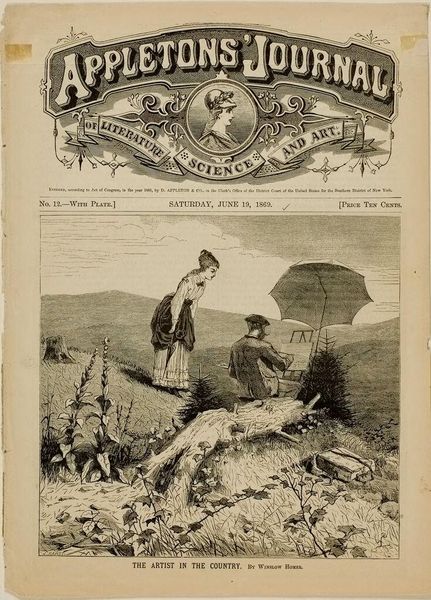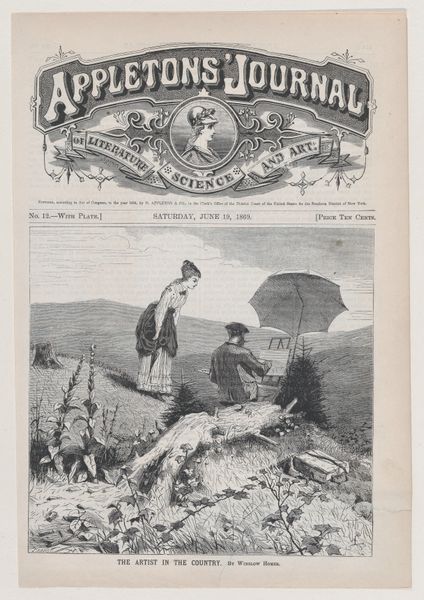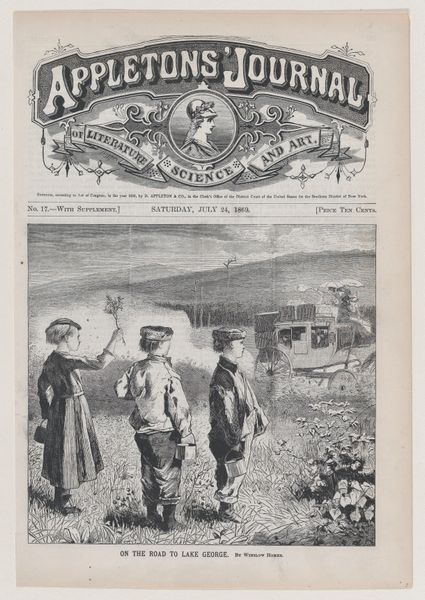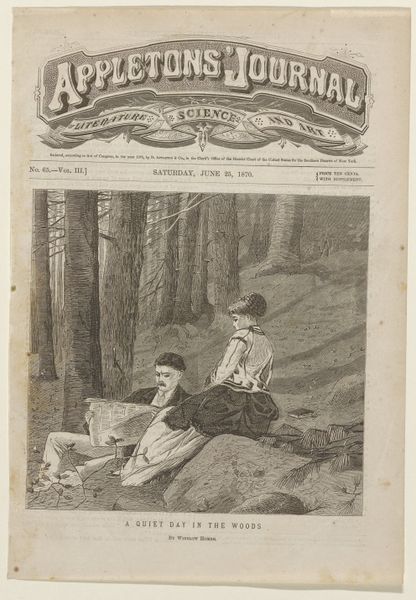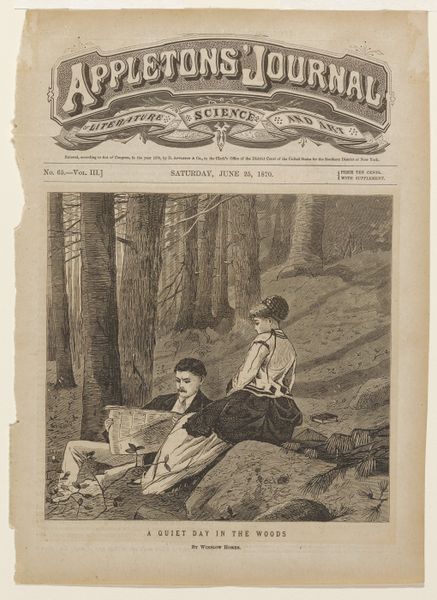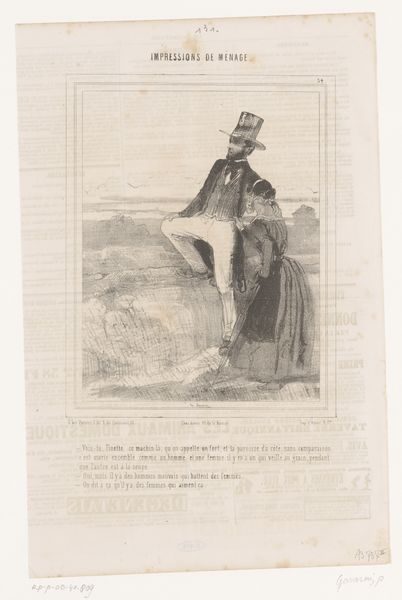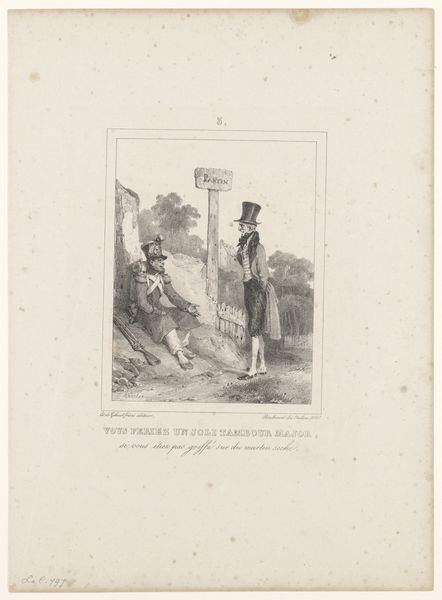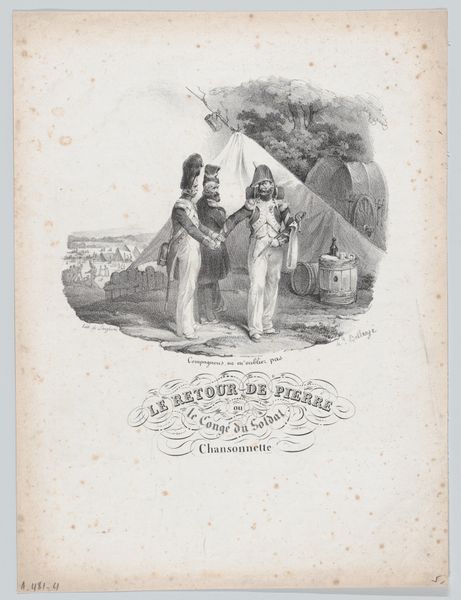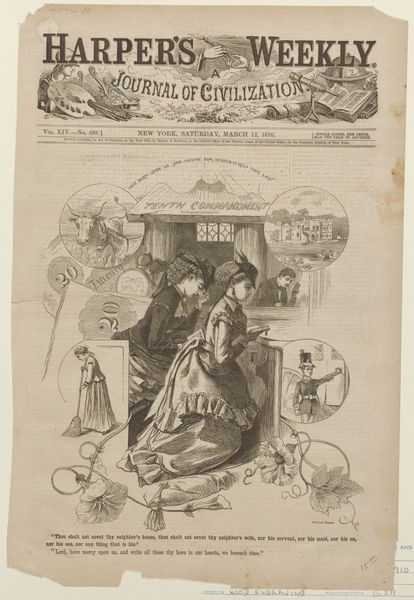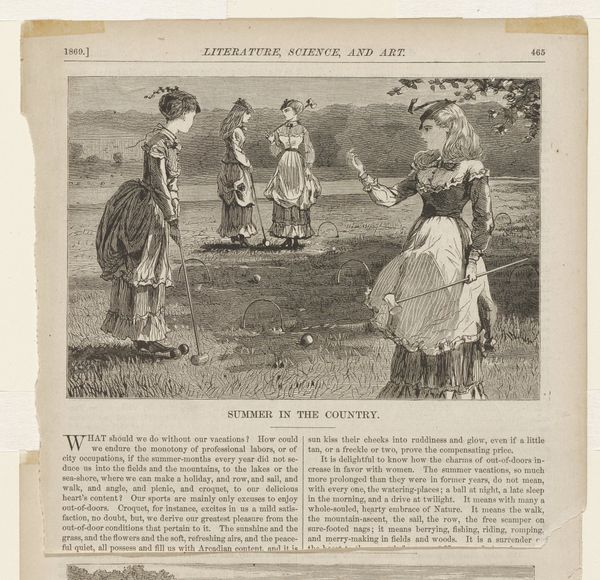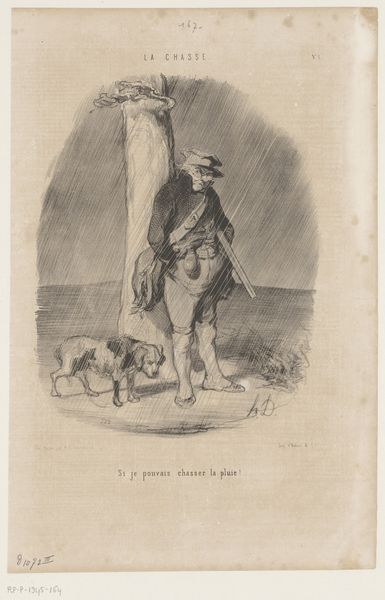
print, woodcut, wood-engraving
# print
#
impressionism
#
landscape
#
woodcut
#
19th century
#
united-states
#
genre-painting
#
wood-engraving
Dimensions: 6 5/16 x 6 5/8 in. (16.03 x 16.83 cm) (image)10 11/16 x 7 7/8 in. (27.15 x 20 cm) (sheet)
Copyright: Public Domain
Curator: Today, we're looking at Winslow Homer's wood engraving from 1869, "Artist in the Country," published in Appleton's Journal. The print depicts a woman looking on as an artist paints a landscape. Editor: The initial feeling is one of tranquility. There's a peaceful simplicity to the composition; the quiet rurality contrasted by what could be critiqued as a commentary on early capitalist, heteronormative coupling. Curator: Indeed, Homer's use of line is quite economical, focusing attention on the play of light and shadow across the figures and landscape, with intricate textural effects of the engraving enhancing a tactile realism. Note the way he structures the scene with a strong diagonal line across the terrain. Editor: From a feminist perspective, the woman stands as an observer, subtly critiquing gendered space. The labor is assigned male while she exists to observe. Curator: Well, structurally, the artist and his painting materials are placed at the high point on the hill—an attempt to establish dominance through art and representation of place? However, her location at the very edge of the hill could reveal social status more simply? Editor: Exactly! The scene unfolds during Reconstruction and visualizes the gendered labor occurring at that time. And I see you looking to connect this formal reading, highlighting spatial elements, that can both highlight but potentially gloss over the underlying critiques embedded within the narrative. What do we truly witness within the image's historical and social narrative when using semiotics in decoding "Artist in the Country" in post-bellum United States? Curator: Point well taken! There's also a fascinating tension created through the contrasts—the woman's delicate dress against the rugged earth, the cultivated art-making versus the raw nature. I had been hyper-focusing on this interplay between artifice and authenticity achieved through structural visual relationships that construct its meaning. Editor: Precisely! By connecting that textual fabric to this artwork, we unveil additional questions for discourse by analyzing historical constructs. Curator: Analyzing the structure reveals layers of deeper meaning that invite discussion, doesn’t it? Editor: That, in turn, contextualizes lived experience represented on these planes.
Comments
No comments
Be the first to comment and join the conversation on the ultimate creative platform.
